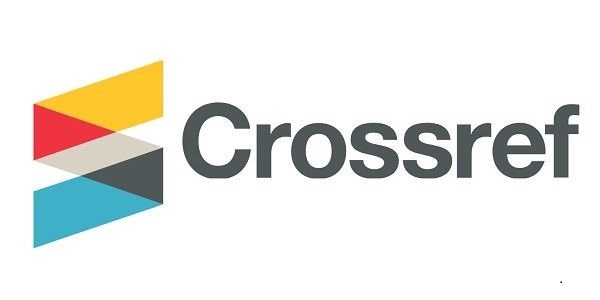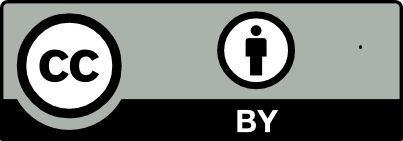Effect of betaine hydrochloride as feed additive on growth performance of common carp (Cyprinus carpio L.)
DOI:
https://doi.org/10.56714/bjrs.49.2.7Keywords:
Betaine, Common carp, Daily growth rate, protein efficiencyAbstract
The current experiment was conducted in the Fish Laboratory belonging to Aquaculture Unit - College of Agriculture. It included the study of the effect of betaine (peptine hydrochloride BeHCl) on the growth performance of common carp (Cyprinus carpio L.). Five fish were used in three replicates for each treatment in the experiment with an average weight of 18.49 ± 1.08 g after acclimation for seven days. Fishes were fed on diets of C (0% additive), T1 (0.20% BeHCl) and T2 (0.25% BeHCl). The experiment lasted for 42 days and all fish were weighed in each replicate every two weeks in order to estimate daily feed. The results showed that the highest final weight (30.06 g) and weight gain (10.80 g) were achieved by fish fed on a diet containing 0.20% BeHCl, followed by the diet containing 0.25% BeHCl, while the lowest weight gain (7.46 g) was achieved in the control diet with a significant difference (P≤0.05) among all treatments, as the fish fed a diet containing 0.20% BeHCl outperformed the rest. Also fish fed 0.20% BeHCl was superior in the daily, relative and specific growth rate, as it reached 1.29 g/day, 56.10 % and 1.06 %/day respectively. The results indicated that the best feed conversion rate was 3.23 for fish fed on a diet containing 0.20% BeHCl, while the other treatments showed conversion rates of 3.66 and 4.35 for 0.25% treatment and control respectively, as well as the highest protein efficiency recorded in fish fed on diet containing 0.20% BeHCl amounted to 0.93, followed by the diet containing 0.25% BeHCl (0.82). Statistical analysis of the results proved that the above differences between the treatments were all significant (P≤0.05)
Downloads
References
B. Baskerville-Bridges, L. Kling, Aquac. Nutr. 6(3), 171 (2000). Doi: https://doi.org/10.1046/j.1365-2095.2000.00149.x
A. Al-Souti, W. Gallardo, M. Claereboudt, O. Mahgoub, Aquac. Rep, 14, 100199 (2019). ; https://doi.org/10.1016/j.aqrep.2019.100199
M.A. Rice, D.A. Bengtson, C. Jaworski, Evaluation of artificial diets for cultured fish, NRAC Fact Sheet No. 222, (1994).
O.O. Ajiboye, A.F. Yakubu, T.E. Adams, WJFMS 4(1), 87 (2012).
A. Polat, G. Beklevik, “The importance of betaine and some attractive substances as fish feed ad ditives”, in, Feed Manufacturing in the Mediterranean Region, Recent Advances in Research and Technology, Zaragoza: CIHEAM 37, 217 (1999).
M. Eklund, E. Bauer, J. Wamatu, R. Mosenthin, Nutr. Res. Rev. 18, 31 (2005).
M. Abdelsattar, M. Abd El-Ati, A. Hussein, A. Saleem, SVU-IJAS 1(2), 33 (2019). Doi: https://DOI:10.21608/svuijas.2019.67118
G.L. Rumsey, Aquaculture, 95, 107 (1991).Doi; https://doi.org/10.1016/0044-8486(91)90077-K
E. Virtanen, R. Hole, J.W. Resink, K.E. Slinning, M. Junnila, Aquaculture 124(1-2), 220 (1994).
Z.E. Rahimabadi, M. Akbari, A. Arshadi, E. Effatpanah, Iranian Journal of Fisheries Sciences, 11(4), 902 (2012).
G. Zhelyazkov, Y. Staykov, D. Georgiev, Conference Proceedings of 7th International Confer ence “Water and fish”, Belgrade-Zemun, Serbia, 518 (2015).
K. Can, E. Sener, Journal of Aqua Products, 6(1), 95 (1992).
A. Przybyl, J. Mazurkiewicz, M. Madziar, M. Hallas, Archives of Polish Fisheries, 7(2), 321 (1999).
M. Yilmaz, Ablak, Turkish Journal of Veterinary & Animal Sciences, 27, 1159 (2003).
M.H. Shivananda, M. Akshaya & P. Prakash, J. Aquac. Mar. Biol. 4(3), 11 (2016).Doi: https://DOI: 10.15406/jamb.2016.04.00083
G.I. Zhelyazkov, Aquac. eng., 4(2), 100 (2018).
M. Abdelhamid, M. A. Ibrahim, N. A. Maghraby, A. A. A. Soliman, Journal of Animal and Poultry Production. 32(1), 167 (2007). Doi: https://dx.doi.org/10.21608/jappmu.2007.219385
M. Sodagar, G. Azari Takami, S. Alksovich Panamarif, H. Mahmod Zadeh, A. Abedian, A. Hos seini, Iranian Journal of Fisheries Sciences. 14(2), 41 (2005).
E. Jabari, R. Akrami, H. Chitsaz, Iran. J. Fish. Sci 26(1), 83 (2017).
C.S. Kasper, M. R. White & P.B. Brown, Aquaculture 205(1-2), 119 (2002).Doi: https://doi.org/10.1016/S0044-8486(01)00658-5.
D.S. Srinivasa, “Effect of G-probiotic on growth, body composition and survival of giant fresh water prawn, Macrobrachium rosenbergii (de Man), and Indian major carp, Labeo rohita (Ham)”, M. Sc. thesis, Univ. Agric. Sci., Bangalore, India, (2000).
M. Hoseinpour, S. Meshkini & E. Hosein Najdegerami, Vet. Res 75(3), 288 (2020). Doi: https://doi.org/10.1016/j.aqrep.2019.100199.
T.K. Ghosh, Y.H. Chauhan, R.N. Mandal, Aquaculture 501, 128 (2019). Doi: https://doi.org/10.1016/J.AQUACULTURE.2018.11.020.
M. Norouzizadeh, H. Allaf Noveirian, A. Hosseinpour, M.M. Sajjadi, Aquatic Animals Nutri-tion 5(1), 85 (2019). Doi: https://doi.org/10.22124/janb.2019.14076.1069

Downloads
Published
Issue
Section
License
Copyright (c) 2023 J. Basrah Res. (Sci.)

This work is licensed under a Creative Commons Attribution 4.0 International License.







